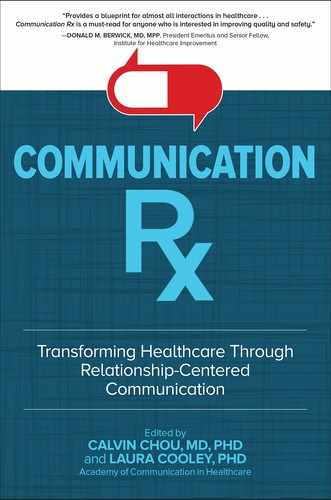Book Description
A proven prescription for effective communication that will empower health professionals to deliver the highest quality care―from the Academy of Communication in Healthcare
Research shows that nothing impacts patient experiences more than the quality of communication. While beneficial, the latest in cutting-edge technology and techniques aren’t enough to ensure the best possible care for patients. The key to better healthcare outcomes is communication.
Over the past four decades, the Academy of Communication in Healthcare has worked tirelessly with health systems, teaching communication skills that put relationships—between patients and providers, as well as among providers—at the center of care. Now, for the first time, ACH’s proven and effective methodology is detailed in this invaluable step-by-step guide. You’ll learn communication skills that will enable you to:
* Provide more accurate diagnoses and effective treatments—and improve patient outcomes
* Boost patient adherence and lower hospital readmission rates
* Make fewer errors and reduce malpractice risks
* Increase patient satisfaction and build teamwork among providers
* Further develop your communication skill set—and help others do the same
In this practical—and potentially life-saving—volume, you’ll discover special sections on teamwork, coaching, shared decision-making, feedback, conflict engagement, diversity, and communicating through hierarchy. The book also provides institutional initiatives to help you implement change in your organization and outlines a field-tested blueprint for healthier communication across the entire industry.
To create effective communication and meaningful connections in healthcare, trust ACH. Communication is literally its middle name.
